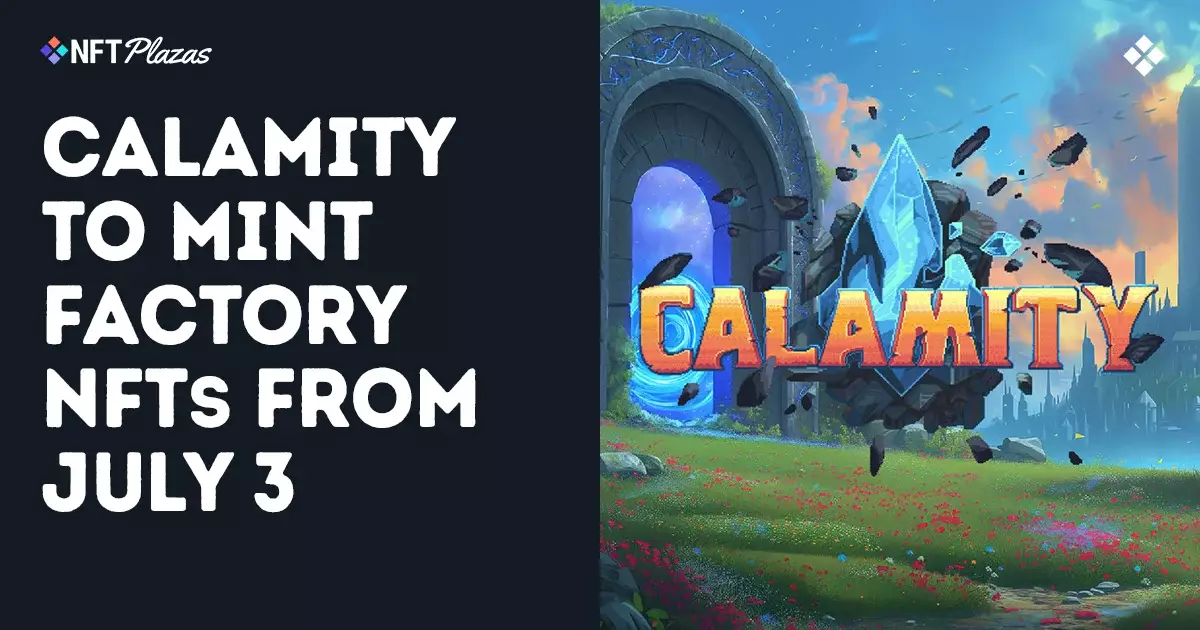NFT gaming promises players a revolution in digital ownership, with unique assets that are supposedly owned outright and tradable beyond the confines of the game. However, this veneer of decentralization often masks a more complicated reality. For instance, Calamity’s upcoming Factory NFTs, touted as personal in-game land and a hub for strategic advantages, might seem groundbreaking. But in reality, ownership is still heavily dependent on the game’s centralized servers and developer control, which can abruptly diminish or even nullify the value of these digital assets. This disconnect between promise and practice raises critical questions about how genuinely secure and lasting ownership in NFT gaming really is.
Tokenomics: A Risky Bet Disguised as Innovation
Calamity’s introduction of the $WYRM ecosystem token, which players can earn by staking Factory NFTs, exemplifies an increasingly common trend: layering complex token-based economies onto games under the guise of “play-to-earn.” While this sounds appealing, the reality is that such tokenomics often resemble speculative financial instruments more than sustainable gaming mechanics. The possibility of merging lower-tier NFTs into higher tiers to increase staking rewards may incentivize players to sink money upfront, betting on token appreciation rather than genuine gameplay enjoyment. The risk is clear—a bubble fueled by speculators rather than long-term gamers, potentially leading to sharp crashes in token and NFT value once interest wanes.
Blurring the Line Between Gaming and Gambling
The structure unveiled by Calamity illustrates a broader concern: NFT gaming increasingly mimics gambling mechanics. The limited release of only 9,999 Factory NFTs at $40 each, with tiered merging systems to amplify rewards, promotes a scarcity mindset and investment urgency. Early Bird rounds and airdrops mirror the hype cycles of initial coin offerings more than traditional gaming launches. Players are enticed into investing significant sums, hoping to capitalize on future gains rather than merely enjoying gameplay. This commodification introduces an addictive gambling element to what should be a form of entertainment, raising ethical issues about targeting vulnerable users with speculative hooks.
Gameplay Takes a Backseat to Monetization
Despite Calamity’s nod towards classic MMORPG inspirations like Diablo and Albion Online, its marketing and mechanics seem heavily tilted towards monetization rather than innovation in gameplay. Factory NFTs promise “unique mechanics” and “real utility,” but these features are inseparably tied to their economic function within the $WYRM token ecosystem. Instead of focusing on fresh content or improved player experiences, the game prioritizes integrating NFTs and token rewards as core elements, potentially reducing the game to a financial tool. This approach risks alienating traditional gamers who seek challenge and immersion over speculative investment opportunities.
The Centralized Reality Behind Blockchain Buzzwords
Calamity claims to leverage Ronin, a blockchain network, to power its MMORPG, implying enhanced security and decentralization. Yet beneath the blockchain buzz lies a centralized reality. The game’s server integrity, content moderation, and gameplay continuity rely heavily on developer control. Blockchain integration primarily serves as a ledger for NFT transactions but does not decentralize game governance or prevent operator-imposed restrictions. This contradiction between claimed decentralization and actual centralized control reveals how blockchain often serves marketing purposes without fundamentally transforming gaming ecosystems.
Socioeconomic Segmentation Within NFT-Driven Games
The tiered NFT system, allowing factory merging up to Tier 5 for better rewards, starkly highlights how NFT gaming can reinforce socioeconomic divides among players. Those able and willing to invest heavily in NFTs gain disproportionate in-game advantages, creating a pay-to-win environment that undermines traditional notions of skill and effort. Calamity’s model encourages an escalating arms race, where players must continually buy and merge NFTs to remain competitive, discouraging casual or lower-income participants. Such stratification may fracture player communities and diminish the inclusive spirit that has long defined successful MMORPGs.
A Cautionary Tale for Gamers With Capital to Lose
Calamity’s ambitious integration of NFTs and token staking is symptomatic of an industry chasing innovation but often at the expense of player experience and financial transparency. While center-right liberal perspectives emphasize individual responsibility and market freedom, they also recognize the need for caution when novel financial products intersect with entertainment. Gamers drawn to projects like Calamity should approach with skepticism, scrutinize the real utility behind NFT claims, and treat the financial promises not as guaranteed income but as high-risk speculation. Without critical awareness, players risk losing time, money, and the very fun that gaming is supposed to provide.

